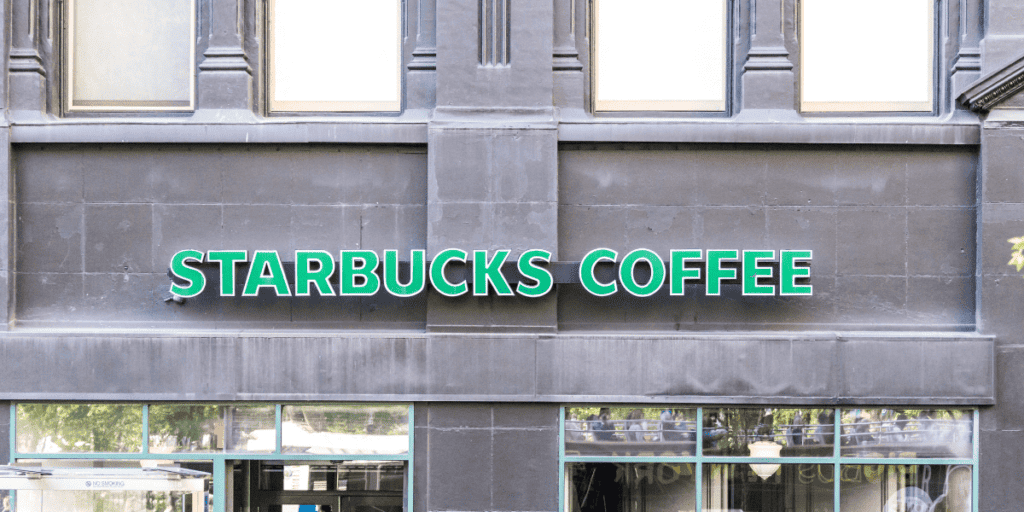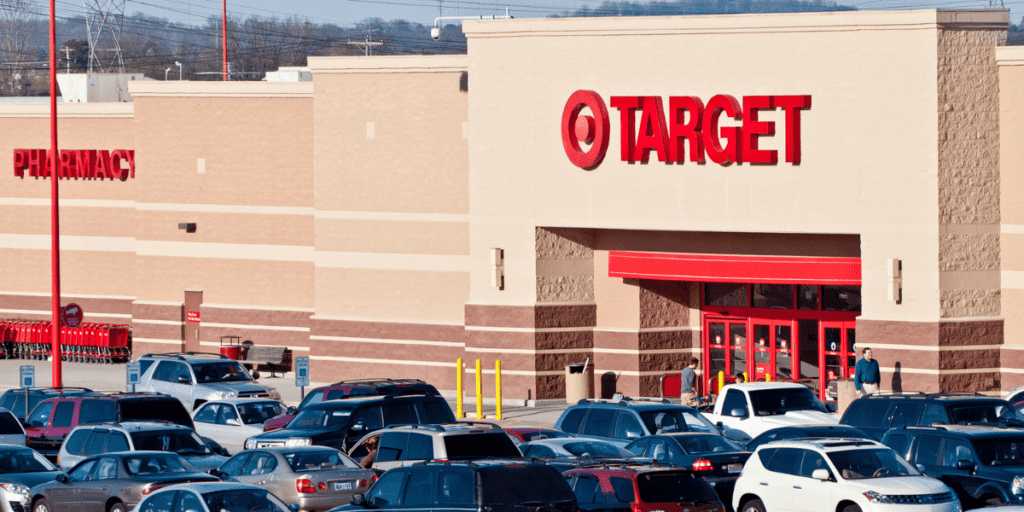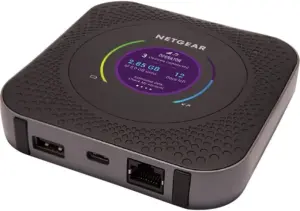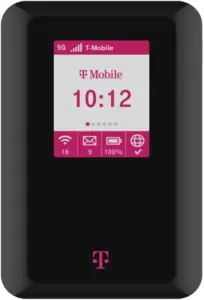Explore 75+ Free Wi-Fi Spots and Stay Secure While Connecting
Your experience highlights a common challenge for digital nomads and vanlifers who rely on free Wi-Fi to stay connected and productive. During the COVID-19 quarantine, many faced difficulties finding reliable internet access as public spaces closed or restricted services.
To avoid similar situations, it’s crucial to explore reliable options for free Wi-Fi and consider investing in mobile hotspots. Here are some tips and resources to ensure you stay connected while on the road:
- Best Places for Free Wi-Fi: Common locations include libraries, parks, and certain fast-food chains like McDonald’s and Starbucks. Many cities also offer public Wi-Fi in popular areas.
- Top Mobile Hotspots: Consider using mobile hotspots from providers like Verizon, AT&T, or T-Mobile, which can give you more reliable internet access than public networks.
- Best Practices: Always prioritize security by using a VPN when connecting to public Wi-Fi, and regularly check for network stability.
I’ve compiled a comprehensive list of the best places for free Wi-Fi, recommended mobile hotspots, and effective strategies to ensure a seamless internet connection from the road. You can find all the details in my full guide!
Table of Contents
- My Favorite Places That Offer Free Wifi
- Nationwide Places That Offer Free WiFi
- Apps for Finding Free & Fast Internet
- Top-Rated Mobile Hotspot Devices
- Tips for Ensuring a Safe & Reliable Wifi Connection
- FAQs About Finding Free Wifi
My Favorite Places That Offer Free WiFi

Before I jump into the huge list of all free internet options, here are my personal recommendations on the best places to work remotely from.
Public Libraries – they are the golden Gods of free wifi, IMO. Free building entry, fast and secure wifi, lots of quiet work spaces, generally safe and clean, outlets to charge your devices, don’t have to buy a coffee or meal to justify using their wifi, public restrooms, and the best part–they don’t get a ton of foot traffic! I once spent three straight days working from a small-town Idaho library as I waited for my monthly allotment of mobile hotspot data to reset. It was nostalgic and peaceful. Check this map of library locations across the US.
Starbucks – You won’t have trouble finding a Starbucks on the West coast. Yes they can be insanely busy in the morning hours, but they are an excellent option for quieter afternoons. Fast and free internet access, private restrooms, and outlets throughout the sitting area.
McDonald’s – You don’t even have to step inside a McDonald’s get free wifi. During COVID quarantine, I was able to poach free wifi from most McDonald’s parking lots if I parked close enough to their building. I was impressed at how relatively reliable and fast their internet was.
Planet Fitness – On top of getting access to cheap showers and bathroom facilities across the country, Planet Fitness also offers free wifi. Most PF locations have lounge areas where you can plug in and hop onto their free wifi (in an air-conditioned facility – great for those hot summer days). PF isn’t the only gym with free wifi– check out the top gym memberships for van life.
Nationwide Places That Offer Free WiFi

All of the locations listed generally provide free internet access; however, it’s important to note that the final decision rests with local store managers, privately-owned franchises, or municipal regulations. Some establishments might require a purchase before granting access, while others may have password-protected networks.
To avoid any inconvenience, it’s a good idea to call ahead and confirm whether a specific location offers free Wi-Fi. This can save you a trip, especially if you’re counting on internet access to get work done.
For more details on where to find free Wi-Fi and additional tips, check out resources like TechRadar and Lifewire.
Chain Restaurants Offering Free Wifi
- McDonald’s
- Burger King
- Wendy’s
- Taco Bell
- KFC
- Chik-fil-A
- Panera Bread
- Olive Garden
- BJ’s Brewhouse
- Buffalo Wild Wings
- Dave & Buster’s
- Cheesecake Factory
- (Most) Dairy Queens
- Panda Express
- (Some) Chipotle locations
- Sonic Drive-In
- Arby’s
- Subway
- Tim Horton’s
- iHop
- Denny’s
- Applebee’s
- Chili’s
- (Some) Pizza Hut locations
- Domino’s Pizza
Chain Coffee Shops with Free Wifi

Coffee shops are usually designed to accommodate customers who may work there for hours (translation: fast free internet and lots of outlets). And unlike a restaurant, you can opt to only spend a few bucks on a small coffee (versus a meal).
- Starbucks Roastery
- Dunkin (formerly Dunkin’ Donuts)
- Caribou Coffee
- Peet’s Coffee
- Coffee Bean & Tea Leaf
- Blue Bottle Coffee
- Stumptown Coffee Roasters
- Intelligentsia Coffee
- Philz Coffee
- Gloria Jean’s Coffee
Retail & Grocery Stores Offering Free Wifi

You may get a decent wifi connection all the way from the parking lot of some of these stores. Namely Walmart, Target and Safeway–I’ve had good luck with Safeways. Also, some “fancier” grocery stores have cafe-style work spaces (typically upstairs), including some Albertson’s and Whole Foods locations.
- Walmart
- Target
- Safeway
- Whole Foods
- Albertson’s
- Best Buy
- Home Depot
- Office Depot
- Staples
- Lowe’s Home Improvement
- Apple Store
- Costco
- Sam’s Club
- Macy’s
- Nordstrom
- Sephora
- Ulta Beauty
- Barnes and Noble
Breweries with Free Wifi Access

Breweries are a great option for nomads or vanlifers traveling with a dog because many of them allow dogs on their patios–and sometimes even inside! Breweries are more socially-oriented than coffee shops or chain restaurants, so you may even witness live music or hosted events. The following are just a handful of well-known breweries with free wifi.
- Lagunitas Brewing Company
- Stone Brewing Company
- Oskar Blues Brewery
- Deschutes Brewery
- Rogue Ales & Spirits
- Flying Dog Brewery
- Ballast Point Brewing Company
- 10 Barrel Brewing Company
- New Belgium Brewing CompanySierra Nevada Brewing Company
Public Places

The best part about snagging wifi at public places is that there are no strings attached; no food or coffee or products you first have to buy–just 100% free internet access. Since a lot of these public places are government-funded or subsidized, you can rest assured wifi will be available–the quality may be questionable, but it will be there!
- Libraries
- Airports
- Hotels
- Ski resorts
- Shopping Malls
- Public Parks
- Universities and Colleges
- Bus stations
- Rest stops
- Subway stations
- Museums and Art Galleries
- Public Plazas and Civic Centers
- Community Centers
- Government Buildings
Apps That Help You Locate and Test the Quality of Mobile Hotspots
These apps are invaluable tools for locating, evaluating, and connecting to free Wi-Fi spots. They come equipped with features like mapping capabilities, crowd-sourced databases, and network scanning tools. With these functionalities, you can easily find nearby Wi-Fi networks, check signal strength, view security settings, and read user reviews, including access passwords.
In addition to helping you find free Wi-Fi hotspots, these apps also assist in optimizing Wi-Fi performance. They can identify the best locations for reliable connections and troubleshoot any network issues you may encounter. Many of them also offer speed tests, interference analysis, and real-time monitoring of Wi-Fi quality, enhancing your overall connectivity experience while on the go.
Here are a few popular apps that can help you find free Wi-Fi:
- WiFi Map: A community-driven app that provides a database of free Wi-Fi hotspots, user-submitted passwords, and real-time connection updates. More info can be found at WiFi Map.
- Wiman: This app not only helps locate free Wi-Fi networks but also assesses their speed and security features. Check it out at Wiman.
- OpenSignal: Primarily known for its mobile network performance analysis, OpenSignal can help you find Wi-Fi hotspots while also providing insights into signal strength and network quality. Learn more at OpenSignal.
These apps aim to enhance your ability to find and connect to free Wi-Fi networks, making it easier to stay connected while traveling or on the go.
• NetSpot – wifi net surveys, analysis, troubleshooting
• WiFi Map Pro – find global wifi hotspots
• inSSIDer – defeat slow wifi
• WiFi Finder + Map – iOS and Android
• WiFi Master – iOS and Android
• Instabridge – global 5G internet speeds at a fraction of regular cost
• WiFi Warden – analyzes quality of nearby hotspots
• WiFiman – free wifi speed tester
• WiFi SweetSpots – iOS and Android
• Swift WiFi – Find and connect to free hotspots worldwide
• OpenSignal – free internet speed tester
• WiFi Analyzer – iOS and Android
• SpeedSpot – quickly check internet connection and performance
Starlink Satellite Internet
An increasingly popular option for vanlifers and nomads to get relatively reliable fast internet is Starlink. Instead of relying on cell phone towers that may be out of reach when you’re boondocked in the middle of nowhere, Starlink relies on satellites hundreds of miles in the sky that can connect from anywhere. The only catch is that you need clear access to the sky for a consistent, stable wifi connection. This means you want to avoid boondocking in super forested areas or places with really cloudy, bad weather. Check out my nomad friend’s deep-dive review on using Starlink internet.
3 Top-Rated Mobile Hotspot Devices
Mobile hotspot devices are excellent solutions for reliable internet connectivity while on the go. They utilize cellular data networks to create a personal Wi-Fi hotspot that can connect multiple devices at once, including smartphones, tablets, and laptops.
With a mobile hotspot, you can access the internet in areas where traditional Wi-Fi networks may be lacking or unstable. These devices typically offer features such as high-speed data connections, extended battery life, and compact designs that make them easy to carry.
Having a mobile hotspot enables you to:
- Stay Connected While Traveling: Access the internet seamlessly, whether you’re in a hotel, at a café, or on the road.
- Work Remotely: Maintain productivity without being tethered to public Wi-Fi, which can be unreliable or insecure.
- Share Internet Access: Connect multiple devices with family or friends without relying on public networks.
- Enjoy Online Activities: Stream videos, play games, or browse the web without worrying about exhausting your mobile data plans.
For more information on mobile hotspot devices and how they can enhance your internet connectivity, check out articles from sources like PCMag and TechRadar.
1. Netgear Nighthawk M1

The Nighthawk M1 is a portable Wi-Fi router that supports 5G connectivity, offering fast and reliable internet access while on the go. This device is known for its impressive data transfer speeds, making it suitable for streaming HD videos, online gaming, and downloading large files without interruptionsf the Nighthawk M1 include:
- Battery Life: It has a solid battery performance, with the option to use an additional battery for extended usage, ensuring you can stay connected without frequent recharging .
- **Multiple D The router can support multiple devices simultaneously, which is perfect for sharing internet access with friends, family, or colleagues .
- **User-Friendly Interface and s an intuitive interface alongside advanced security features, helping to protect against unauthorized access while maintaining ease of use .
Overall, the Nighthawk M1 has gained a reputatione hotspot device due to its reliability and robust performance. For more detailed information, you can visit sources like PCMag and TechRadar.
2. T-Mobile 5G Hotspot

The T-Mobile 5G Hotspot is a budget-friendly mobile hotspot device that offers reliable performance, making it a solid choice for users looking for cost-effective internet connectivity. While it may not deliver the same level of performance as more expensive models, many reviewers consider it a great value for the price.
Key Features:
- High-Speed Connectivity: Utilizing T-Mobile’s 5G network, this hotspot provides download speeds of up to 500 Mbps, enabling smooth streaming, gaming, and browsingOpensignalti-Device Support**: The device can connect up to 10 devices simultaneously, making it ideal for small groups or families traveling together Its battery life allows for extended usage, reducing the need for frequent recharging—convenient for both travel and remote work situations 【11†source】.
OpensignalHotspot strikes a good balance between performance and affordability, making it a popular choice among users. For more detailed information, you can check sources like Tom’s Guide and PCMag.
3. MoFi 4500

Designed to provide reliable internet connectivity, the MoFi 4500 supports 4G LTE and 3G networks, making it suitable for use in areas with limited or no wired internet infrastructure. It features multiple external antenna ports, allowing users to enhance signal strength and improve overall performance in areas with weak network coverage.
The device is equipped with advanced routing capabilities, enabling it to function as a full-fledged router, accommodating wired connections as well. The MoFi 4500 also offers a user-friendly interface for easy setup and configuration. With its robust build quality and extensive compatibility with various cellular networks, the MoFi 4500 is a good option for users seeking a reliable and versatile mobile hotspot solution.
Tips for Ensuring a Safe and Reliable WiFi Connection
1. Use a Virtual Private Network (VPN)
A VPN creates a secure and encrypted tunnel between your device and the internet, shielding your personal information, browsing activities, and sensitive data from potential interception by hackers or unauthorized individuals.
By encrypting your internet traffic, a VPN adds an extra layer of security, especially when accessing public networks that may be susceptible to malicious activities. A reputable VPN service masks your IP address and provides servers in various locations, allowing you to browse the internet anonymously and bypass geographic restrictions.
2. Connect to Trusted Networks
It’s crucial to prioritize networks from reputable sources, such as well-known companies or recognized public networks. These networks are more likely to have proper security measures in place, reducing the risk of connecting to insecure or malicious networks.
Be cautious when connecting to unfamiliar or suspicious networks, especially those with generic or misspelled names, as hackers may set them up to trick unsuspecting users. Verifying the legitimacy of the network by asking staff or checking with official sources can help ensure that you are connecting to a reliable and secure WiFi network.
3. Disable Auto-Connect
Auto-connect is a feature that automatically connects your device to available Wi-Fi networks without requiring your explicit permission. While this may save you time and streamline your internet access, it can pose significant security risks. Cybercriminals can create fake Wi-Fi networks with enticing names to trick users into connecting, potentially exposing sensitive information and making devices vulnerable to attacks.
Disabling the auto-connect feature gives you greater control over your Wi-Fi connections, allowing you to manually select trusted networks and avoid the risks associated with connecting to unsecured or fraudulent networks.
For more detailed insights on the risks and management of auto-connect features, you can refer to sources like Norton and Kaspersky.
4. Verify Network Names
It’s essential to double-check the network name (SSID) of the WiFi network you are connecting to before joining. Hackers often create rogue networks with names similar to legitimate ones, hoping to trick users into connecting and potentially exposing their sensitive information. Be wary of networks with generic or suspicious names, as they could indicate fake networks. Take the time to confirm the correct network name with the staff or by checking official signage or communication from the establishment.
5. Enable Firewall and Antivirus Protection
A firewall is a barrier between your device and potential threats, monitoring incoming and outgoing network traffic and blocking unauthorized access. It helps protect your device from malicious activities and prevents unauthorized intrusion.
Having up-to-date antivirus software provides an extra layer of defense against malware, viruses, and other malicious software that could compromise your device’s security. These security measures help identify and mitigate potential risks, ensuring your device and data remain protected while connected to free WiFi networks.
6. Limit Sensitive Activities
Public Wi-Fi networks are often vulnerable to security risks, making it unwise to engage in activities that involve sensitive information, such as online banking, making purchases, or entering personal credentials. It’s best to reserve these activities for connections to trusted and secure networks.
By avoiding sensitive tasks on public Wi-Fi, you significantly reduce the risk of exposing your personal and financial information to potential hackers or malicious actors. Instead, it’s safer to use public Wi-Fi for general browsing, social media, or other non-sensitive activities.
FAQs About Finding Free Wifi
1. Can public wifi be limited or restricted?
Yes, public Wi-Fi can be limited or restricted in various ways, depending on the location and purpose of the network. For instance, government buildings may impose limitations on speed and accessibility to maintain network stability and security. These restrictions are designed to manage network resources effectively and prioritize essential services, especially when sensitive information is involved.
Additionally, certain websites or activities that could either pose security risks or consume excessive bandwidth may be blocked. This ensures that the network remains functional for important tasks and reduces the potential for cyber threats.
2. Are public wifi networks slower than private networks?
Public WiFi networks can sometimes be slower than private networks due to various factors. Public networks are typically shared by multiple users, leading to increased congestion and reduced bandwidth available to each individual.
They also often have limited resources and may not prioritize speed or performance. However, it’s important to note that not all public WiFi networks are slow, and some may provide decent speeds depending on the location and infrastructure.
3. How can I differentiate between legitimate vs fake public wifi networks set up by hackers?
- Confirm the network’s name with staff or official sources to ensure accuracy. Legitimate networks are often provided by reputable establishments or known public networks.
- Check for secure network indicators such as the lock symbol or “https” in the URL when accessing websites.
- Be cautious of prompts that ask you to enter personal information or financial details on an unsecured network. Fake networks may have generic names or misspellings.
- Beware of networks that unexpectedly require payment or display excessive pop-up ads.
4. What steps can I take to optimize the speed and performance of my device when connected to public wifi networks?
To enhance your experience when using public Wi-Fi networks, position yourself close to the Wi-Fi access point to ensure a strong signal. This helps mitigate the impact of physical obstacles and interference from other devices that can degrade signal quality. Closing unnecessary background applications and browser tabs can also free up system resources, leading to better performance.
Regularly clearing your device’s cache and browsing history is advisable for improving speed. Additionally, consider using a browser extension that compresses data to reduce bandwidth usage, which can be particularly beneficial in a public setting. If permissible, adjusting your device’s DNS settings to a faster and more reliable server may also enhance your connectivity experience.
For vanlifers and digital nomads, knowing how to find and access free Wi-Fi hotspots is essential. However, it’s important to be aware of the security risks involved. By implementing these precautions, you can protect your privacy and safeguard your data from potential threats.
Always remain vigilant, ask for recommendations from trusted sources, and be aware of your surroundings when connecting to public Wi-Fi. With the right mix of convenience and caution, you can make the most of free Wi-Fi while maintaining your digital well-being.

Leave a Comment